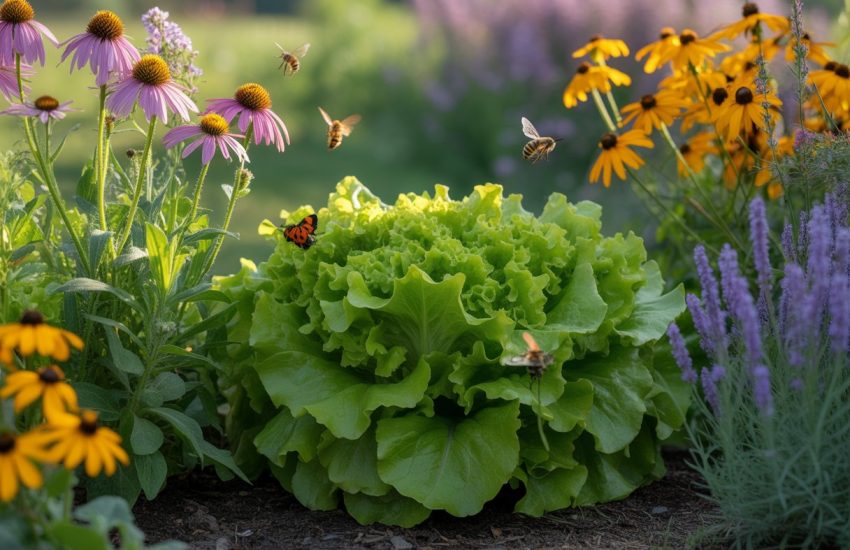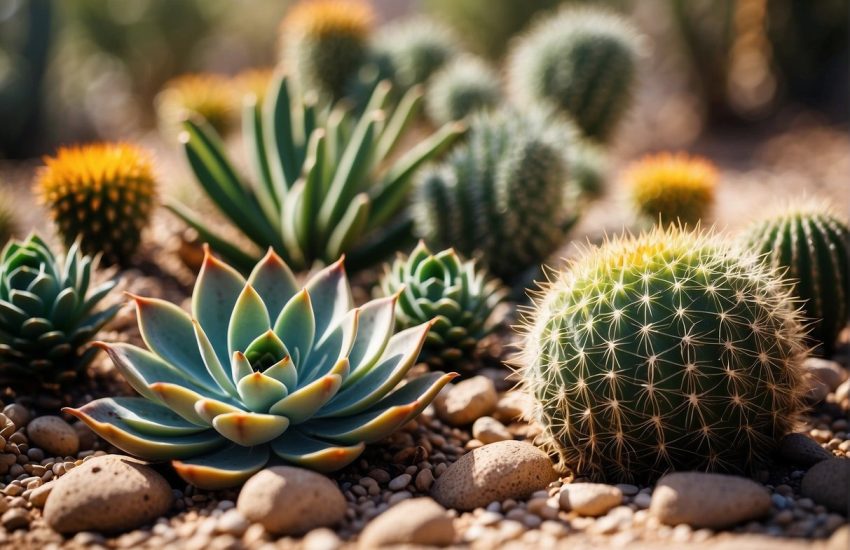Growing Thyme in Containers: Essential Tips for Thriving Herb Gardens
Thyme loves containers—honestly, it just does better when you can control drainage and sunlight. Growing thyme this way means you get fresh herbs year-round, even if your space is tiny or you’re stuck indoors.
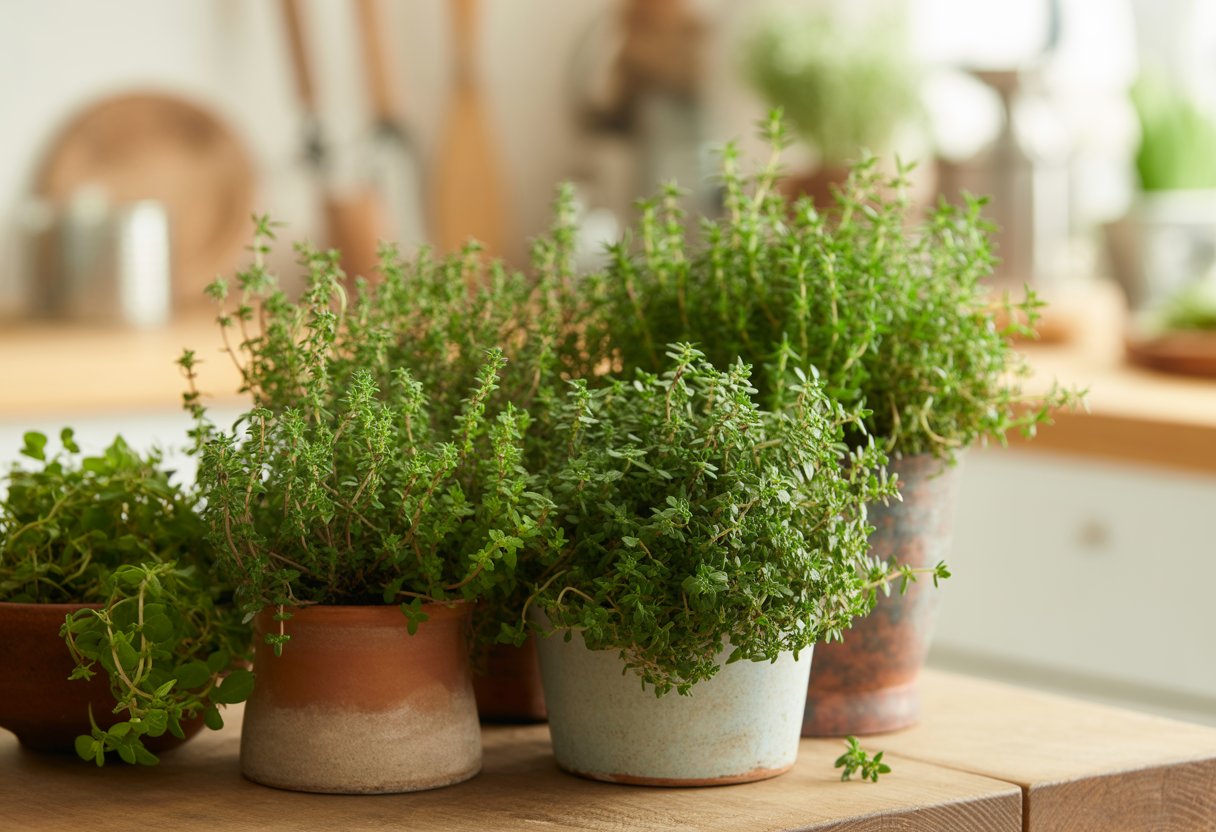
Picking the right container and soil really helps prevent root rot and keeps thyme happy. Water well and keep plants near a sunny window or outside so they stay vibrant and flavorful.
A lot of folks find container thyme super convenient for quick snips and easy care. Its compact size fits right onto patios, balconies, or even a kitchen sill, so you can grab a sprig whenever you need it.
Choosing Containers and Potting Mix for Thyme
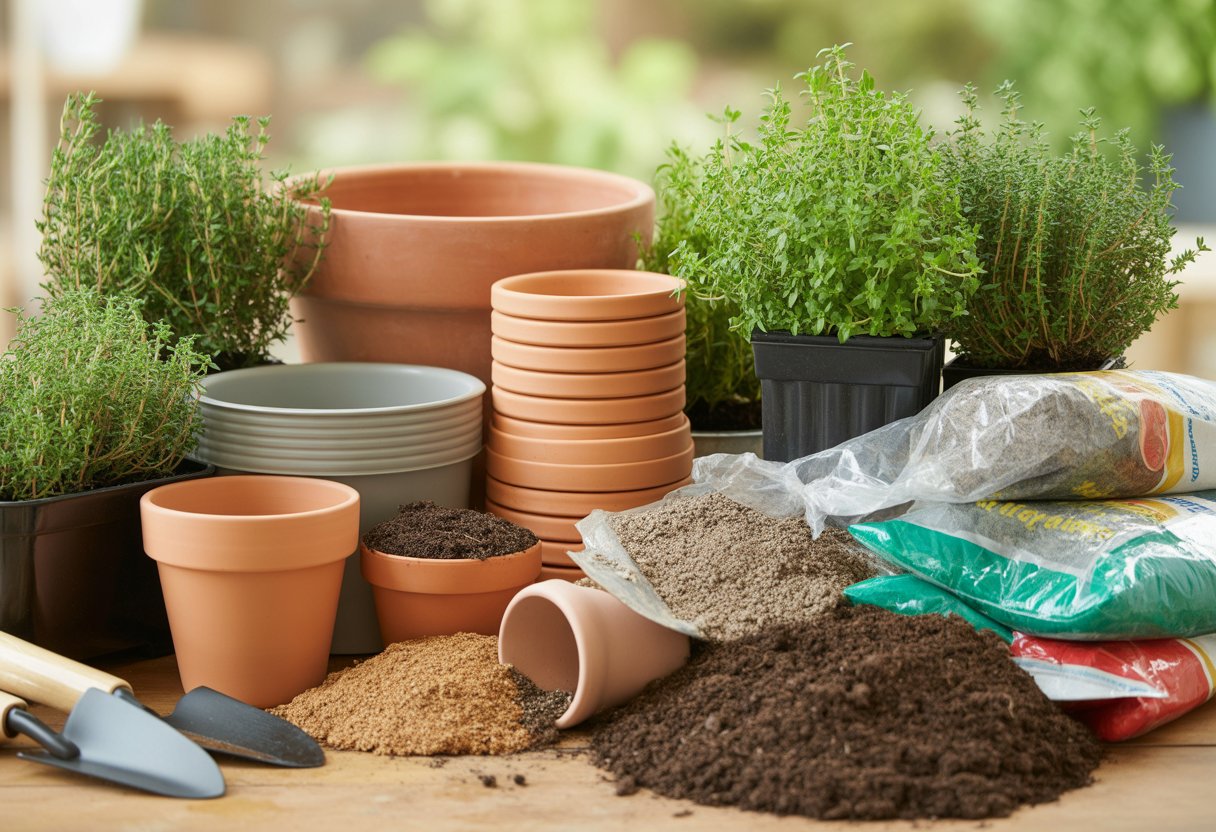
Thyme needs containers that drain well and give roots room to grow. The right potting mix helps with airflow and moisture, which thyme roots really appreciate.
Selecting the Right Container
Thyme roots don’t go deep, so shallow containers work best. Go for pots at least 6-8 inches deep so roots can spread out.
Clay, ceramic, or plastic pots all work, but clay’s a favorite since it breathes and regulates moisture.
Window boxes are great for growing a few thyme plants together. They should be at least 12 inches deep and wide to avoid crowding.
Make sure your container is roomy enough for the thyme to stretch out a bit, so plants aren’t fighting over water and nutrients.
Ensuring Proper Drainage
Every thyme pot needs drainage holes—no exceptions. They let water escape and keep roots from sitting in soggy soil.
If your pot doesn’t have holes, you can toss in some gravel or broken pottery at the bottom, but honestly, it’s not as good as real holes. Propping containers up on pot feet or bricks helps water drain away, too.
Best Potting Mix for Thyme
Thyme likes a sandy, well-draining soil—think Mediterranean. Look for a potting mix with perlite, sand, and peat or coconut coir for a good balance of drainage and moisture.
Skip heavy garden soil or anything that stays wet too long. Thyme roots want to dry out between waterings.
A simple mix could be:
- 50% potting soil
- 25% coarse sand
- 25% perlite or small gravel
This combo helps water drain fast and keeps roots happy.
Planting and Caring for Thyme in Containers
If you want your thyme to thrive in a pot, you’ll need to pay attention to soil, water, light, and a bit of feeding. A little routine care goes a long way for perennial herbs like this.
How to Plant Thyme
Pick a container with solid drainage. Use a light, sandy soil mix—either one made for herbs or just add sand or perlite to regular potting soil.
Space out seedlings or small clumps about 6 to 12 inches apart so they can spread. Plant them a tad deeper than their root base and press the soil gently around them.
Don’t pack the soil down too hard—thyme roots need to breathe. Pots should be 6 to 8 inches deep, minimum.
Watering and Light Requirements
Thyme really wants full sun—6 to 8 hours a day if you can swing it. Set the pot in a south-facing window or outside where it’ll get plenty of light.
Water enough to keep it happy but let the soil dry out between waterings. If you overwater, roots will rot fast.
Stick your finger about an inch into the soil; if it’s dry, it’s time to water. During hot spells, you might need to water a bit more often.
Fertilizing Thyme Plants
Thyme doesn’t need a ton of fertilizer. It actually tastes better in lean soil.
Once every 6 to 8 weeks, use a balanced, diluted liquid fertilizer during the growing season. Too much fertilizer can make the flavor bland.
Or, you could add a slow-release herb fertilizer when you plant. Avoid high-nitrogen stuff—it’ll make the plant leafy and less tasty.
Encouraging New Growth
Pinch off the tips of thyme stems now and then to keep the plant bushy and less woody. Snipping often encourages fresh shoots and delays flowering, which can dull the flavor.
If your thyme gets leggy or woody, trim back old stems by about a third in early spring. Repot or divide big clumps every couple of years to keep things healthy.
Harvesting, Culinary Uses, and Companion Herbs
Thyme’s versatility really shines in containers, and smart harvesting keeps plants healthy and flavorful. Storing it right helps preserve those bright, fresh notes, and pairing thyme with other herbs can make your garden (and kitchen) better.
When and How to Harvest Thyme
Wait until the plant’s about 4 to 6 inches tall before you start harvesting—ideally before it flowers for the best flavor. Cut stems just above a leaf node to help the plant get bushier.
Use sharp scissors or pruners and snip the woody stems 3 to 4 inches from the top. Don’t take more than a third of the plant at once or you’ll stress it out.
Harvest in the morning, if possible—that’s when the oils are strongest.
Storing and Using Fresh Herbs
Fresh thyme tastes best right after you pick it, but you can store it if you need to. Wrap the stems in a damp paper towel and pop them in a sealed bag in the fridge; they’ll last up to two weeks.
For longer storage, hang small bunches to dry in a dark, airy spot. Strip the dry leaves and stash them in a sealed jar.
Thyme works with just about anything—meats, veggies, soups, stews. It plays nicely with parsley, oregano, and sage, adding flavor without stealing the show.
Best Herb Companions for Thyme
In pots, thyme gets along well with basil, oregano, and sage since they all like similar care. Keep mint out of the same container—mint’s a bully and will take over.
Chives, garlic chives, and cilantro are good neighbors, too, and can help deter pests. Herbs like spearmint and lemon balm are best in their own pots to avoid crowding.
Planting lavender near thyme can attract pollinators and make your garden smell amazing. Lemongrass isn’t a perfect companion in the same pot, but it’s fine nearby for cooking.
Addressing Common Problems and Maximizing Benefits
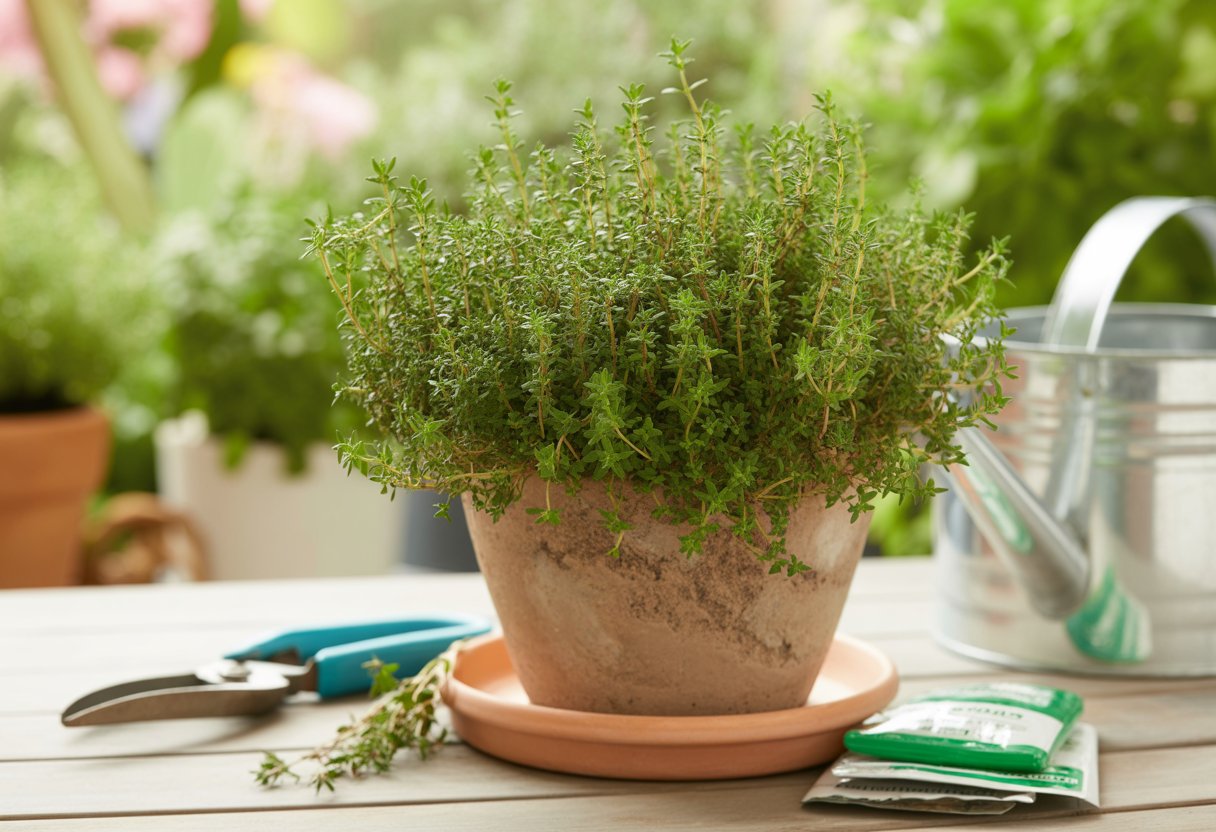
Container thyme sometimes struggles with moisture, cramped roots, or pests. With a little care, you’ll keep it healthy and ready for all your cooking adventures.
Troubleshooting Container Thyme Issues
Thyme hates soggy soil. Only water when the top inch is dry, and always use pots with drainage holes.
If your thyme seems cramped, repot it every year or two into something a bit bigger. Pruning regularly helps keep the plant bushy and stops it from getting leggy.
Yellow leaves or dropping foliage usually means too much water, bad drainage, or not enough sunlight. Thyme really wants at least 6 hours of direct sun.
Pest and Disease Management
Thyme’s pretty tough, but spider mites, aphids, and powdery mildew can show up. Check leaves for webs, sticky stuff, or white powder now and then.
Treat pests with insecticidal soap or neem oil if needed. Avoid getting the leaves wet when you water to keep humidity and fungus down.
Good air flow helps, so don’t crowd your pots. Keep the area tidy—clear away dead leaves and debris to stop pests and diseases from moving in.
Medicinal Properties and Additional Uses
Thyme packs thymol, a natural antiseptic that helps with respiratory health. You can toss it into teas or try a steam inhalation to calm coughs and clear up congestion.
Its essential oils fight off fungus and bacteria, so they’re handy in homemade cleaning mixes. If you add fresh thyme leaves to your meals, you’ll get a nice flavor boost and some mild antioxidants.
Growing thyme in containers? That just makes life easier. You get fresh herbs on demand, and it’s much simpler to manage how your thyme grows.

